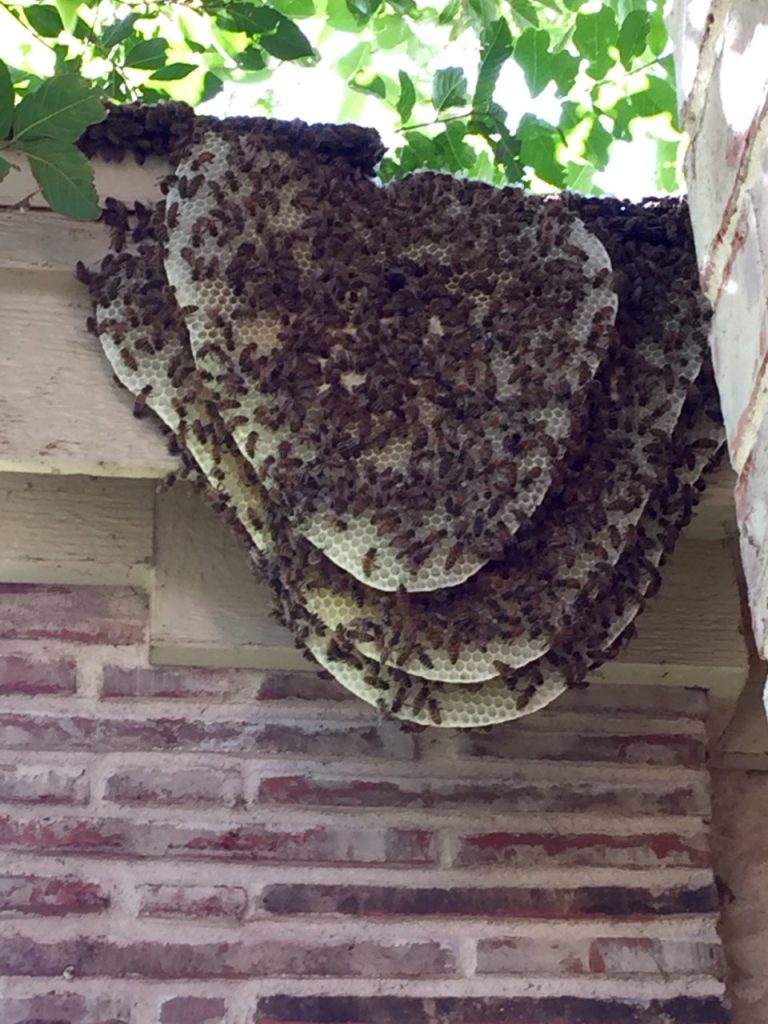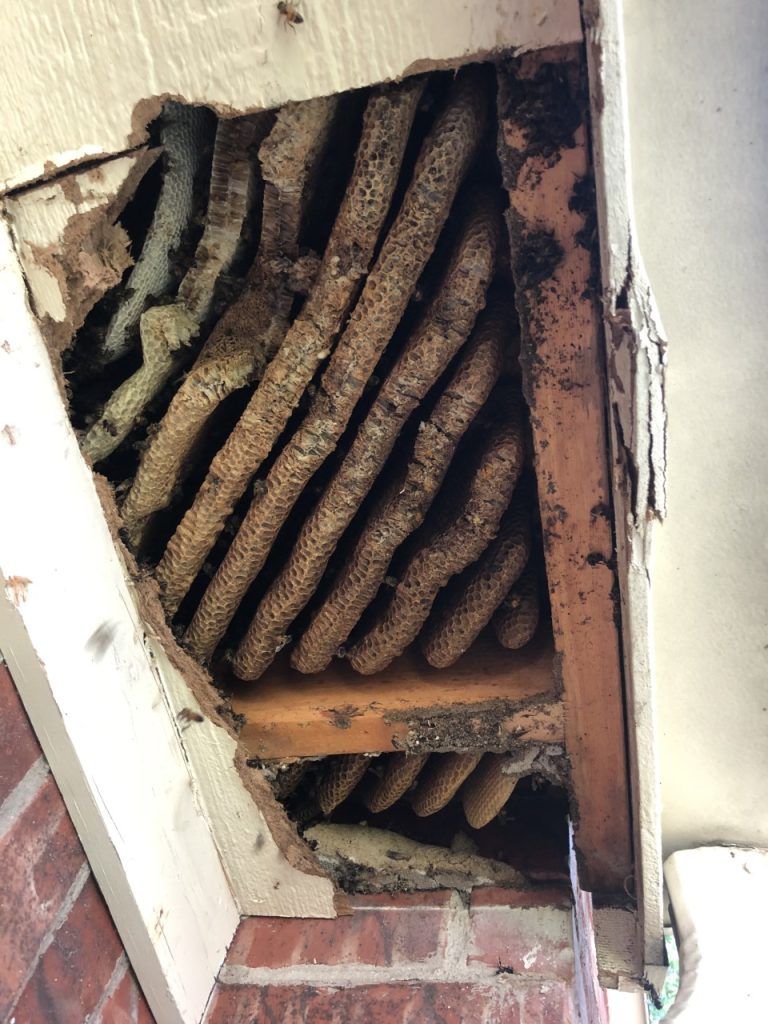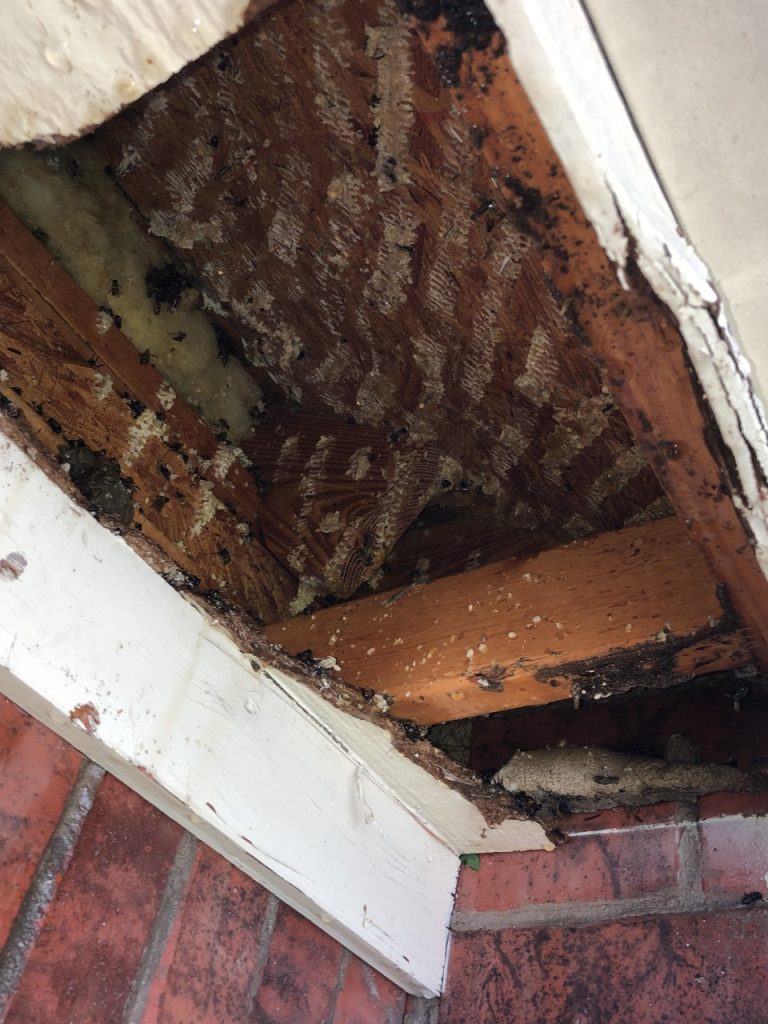
An Austin family began noticing a stray bee or two buzzing around their back door. At first, they thought nothing of it. But the slow arrival of more and more bees began to create a noticeable presence near their front door.
Upon closer inspection, the family uncovered a beehive in the eaves of their home.
When to Consider Bee Removal
Typically, the formation of a beehive in your home or in your backyard is cause for concern. After all, these are stinging insects taking up residence in your space.
Importantly, there are several different types of bees that you might encounter. The most common include European honeybees, bumblebees, Africanized bees, and ground bees.
Typically, bees will only sting if their hive is threatened. But Africanized bees, otherwise known as killer bees, are known for aggressive behavior and may attack unprovoked.
Unfortunately, it can be difficult to distinguish between a European honeybee and an Africanized bee. With that, removal is the safest course of action. This is especially true if the hive has made its way into your house.
But even beehives on the outside of your home could warrant removal. It is possible to provoke bees and incur a sting. Although a simple sting may not affect you too much, 5-7% of the popular is highly allergic to stinging insects.
Can I remove a beehive myself?
A beehive holds an average of 30,000 bees. Although many bees are passive creatures, they will sting if you threaten their hive. It is easy to appear like a threat when you are removing a beehive. That could lead to 30,000 bees chasing you down!
Of course, you could take a different tactic and attempt to exterminate the bees entirely. However, that may not be a long-term solution if you are unable to find and eliminate their point of entry.
Why do you need to remove the entire hive and sanitize it?
After the bees are taken care of, the entire hive must be removed. An old hive left in your home could attract a new colony of bees. It’s easy to see how this old hive would attract new bees.

Additionally, the hive area must be sanitized to remove any honey. Otherwise, leftover honey could attract other pests, including ants, cockroaches, rats, or raccoons.

After the technician removed the bees from the Austin hive, they cleaned the area to ensure the hive could attract no other pests.
Benefits of Using Critter Control for Bee Removal
Depending on where you live, you may be able to find a local beekeeper willing to do the job for free. However, their availability may be limited.
Critter Control technicians have the resources and experience to remove a beehive safely. When you work with Critter Control, we can start service relatively soon and solve the problem quickly. When you choose other control methods, it may take weeks or months to accomplish the same goal.